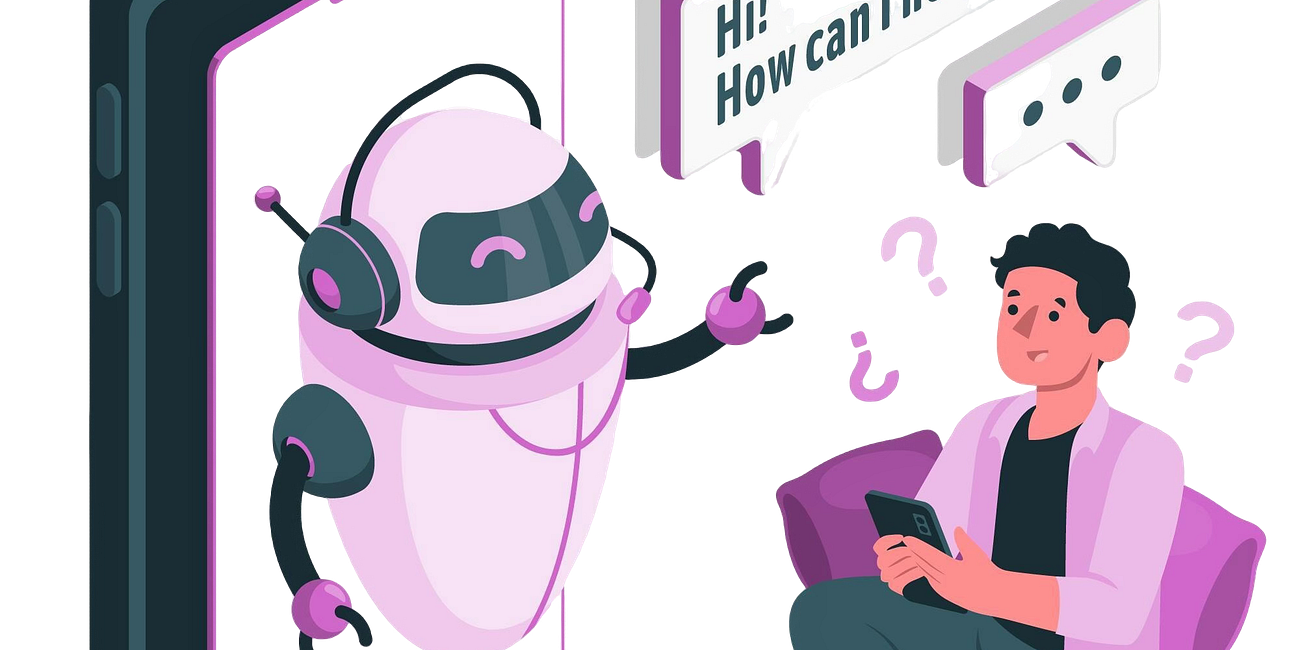What is Graph RAG? Why Product Managers Should Care
The future of AI isn’t just bigger models – it’s smarter relationships.
This is part of my NUANCES IN PRODUCT DEVELOPMENT FOR AI section from my learning Series.
AI Product Management – Learn with Me Series
Welcome to my “AI Product Management – Learn with Me Series.”
I would recommend you read about Retrieval-Augmented Generation (RAG) here before beginning to understand GraphRAG.
Let’s get started.
The PM’s Nightmare: When Traditional AI Falls Short
You’ve seen it happen:
Your chatbot gives conflicting answers about customer refund policies
Your recommendation engine suggests winter coats to customers in Summer
Your analytics tool misses critical supply chain risks hidden in vendor relationships
Traditional RAG systems (Retrieval-Augmented Generation) hit walls with connected data problems. They’re like librarians who only know book titles – not the stories inside or how they connect. Enter Graph RAG – the librarian who’s read every book and understands how ideas interlink.
What is Graph RAG?
Graph RAG (Retrieval-Augmented Generation using knowledge graphs) is an advanced AI technique that combines Large Language Models (LLMs) with structured, interconnected data.
Unlike traditional RAG, which retrieves isolated text snippets, Graph RAG maps relationships between entities—like people, companies, or concepts—to deliver context-rich, accurate answers.
Why Graph RAG Matters for Product Managers
35-50% fewer errors than traditional RAG in complex queries
67% lower LLM costs by retrieving precise data vs. text chunks
Solves"multi-hop" questions traditional AI can’t handle
What is Multi-Hop Reasoning?
Multi-hop reasoning is like solving a puzzle where you need to connect several pieces of information to find the answer. Instead of getting the answer directly, you hop from one clue to another until you piece together the full picture.Example: Finding a Restaurant
You want to find a Chinese restaurant in your area that your friend recommended.
First, you remember your friend mentioned a restaurant near the park.
Then, you check the park's location and find a list of nearby restaurants.
Finally, you look for the one that serves Chinese food.
How It Works
Knowledge Graphs: Store data as nodes (entities) and edges (relationships).
Example: “Company A → competes with → Company B” or “Drug X → treats → Disease Y.”
Retrieval: Instead of searching text chunks, Graph RAG traverses the graph to find connected insights.
Generation: The LLM uses this structured context to craft nuanced, fact-grounded responses.
Think of it like Google Maps for data: traditional RAG shows you individual addresses, while Graph RAG reveals the entire road network, traffic patterns, and shortcuts.
Technical Deep Dive - Key Components of Graph RAG
Knowledge Graph: A structured representation of entities and their relationships.
Graph Database Layer: Stores and manages the knowledge graph.
Query Processing Engine: Converts user queries into graph traversal operations.
Pattern Matching System: Identifies relevant subgraphs based on query parameters.
Ranking Algorithm: Prioritizes results based on relevance and relationship strength.
Response Assembly Module: Constructs coherent responses from the retrieved graph data.
Here's a structured breakdown of how it operates:
Data Ingestion and Knowledge Graph Construction:
Entity Extraction: The system begins by ingesting raw data, which could be text documents, databases, or other sources. Using natural language processing (NLP) techniques, it extracts entities (e.g., people, places, concepts) from the data.
Relationship Identification: It then identifies relationships between these entities. For example, "Person A works for Company B" or "Drug X treats Disease Y."
Graph Building: These entities and relationships are structured into a knowledge graph, where nodes represent entities and edges represent relationships.
Query Processing:
Query Interpretation: When a user submits a query, the system interprets it to understand the intent and context.
Graph Traversal: Instead of searching through text chunks, the system traverses the knowledge graph to find relevant nodes and edges. This traversal can involve multiple hops, allowing the system to connect related pieces of information.
Context Enrichment:
Structured Context: The retrieved graph data provides structured context, which is more accurate and less ambiguous than unstructured text.
Integration with LLM: The enriched context is fed into a large language model (LLM), which uses this structured information to generate a response.
Response Generation:
Contextually Rich Responses: The LLM generates responses that are grounded in the knowledge graph, ensuring accuracy and relevance.
Reduced Hallucinations: By leveraging structured data, Graph RAG reduces the likelihood of generating incorrect or nonsensical information.
Continuous Learning and Updates:
Dynamic Updates: The knowledge graph is continuously updated with new data, ensuring that the system remains current and relevant.
Feedback Loops: User interactions and feedback can be used to refine the knowledge graph and improve future responses.
The PM’s Cheat Sheet: Traditional RAG vs. Graph RAG
Busting Biggest Myths
Myth 1: “More data = better answers.”
Reality: Unstructured data drowns LLMs in noise. Graph RAG cuts through clutter with targeted, relationship-driven insights.
Myth 2: “AI can’t handle complex queries.”
Reality: Graph RAG answers multi-hop questions like “How do supply chain delays impact Company X’s ESG scores?” by connecting suppliers, logistics, and sustainability metrics.
Myth 3: “Hallucinations are unavoidable.”
Reality: Knowledge graphs ground responses in verified facts, reducing errors by 35-50% compared to traditional RAG.
Myth 4: “AI can’t explain its reasoning.”
Reality: Graph RAG traces answers back to specific nodes/edges (e.g., “This conclusion came from Patent Z and Clinical Trial Q”).
Myth 5: “Graphs are too complex for real-world use.”
Reality: Tools like Microsoft’s GraphRAG automate graph creation, making it accessible without specialized databases.
B2C Companies Using Graph RAG at Scale
LinkedIn
Uses Graph RAG for people search, recommendation engines, and professional networking.
Example: Finding connections based on shared interests or industries.
Netflix
Implements Graph RAG for personalized content recommendations by analyzing user behavior and preferences.
Example: Suggesting shows based on watched genres and similar user preferences.
Airbnb
Employs Graph RAG for property recommendations, connecting user preferences with available listings.
Example: Recommending vacation homes based on location, amenities, and past bookings.
Google
Leverages Graph RAG in its search engine to provide contextually rich answers.
Example: Answering complex questions by traversing relationships in its Knowledge Graph.
Critical Questions for Product Managers Considering Graph RAG Integration for AI Accuracy
Key Takeaways
Product Managers should focus on aligning Graph RAG capabilities with specific business objectives.
Data readiness is critical; assess whether your datasets are structured enough to create a robust knowledge graph.
Integration strategies should balance performance improvements with cost considerations.
Clear KPIs tied to business outcomes will help justify investment in Graph RAG.
Vendor selection is crucial; evaluate based on scalability, ecosystem support, and alignment with your technical stack.
Conclusion
Graph RAG represents a significant advancement in AI, offering more accurate and contextually rich responses by leveraging knowledge graphs.
For product managers, understanding and implementing Graph RAG can lead to more intelligent and effective AI-driven products, providing a strategic advantage in the market.
Your move: Experiment with a pilot, measure accuracy gains, and watch your AI products outthink the competition
AI Product Management – Learn with Me Series
Welcome to my “AI Product Management – Learn with Me Series.”
Appendix: Critical Questions Deep Dive
a) Some more GraphRAG Questions
What are our key use cases that require complex relationship understanding?
Nudge: Consider scenarios where users need to connect multiple pieces of information, such as fraud detection, supply chain optimization, or personalized recommendations.
How will Graph RAG improve our current RAG implementation?
Nudge: Evaluate potential improvements in accuracy, context understanding, and ability to handle multi-hop queries. For example, can it reduce hallucinations by 35-50% compared to traditional RAG?
What is the state of our data for graph representation?
Nudge: Assess if your data has clear entities and relationships. Is at least 40% of your data structured and relationship-rich?
Which graph database should we choose for our implementation?
Nudge: Compare options like Neo4j, TigerGraph, or Amazon Neptune based on scalability, query performance, and integration capabilities with your existing stack.
How will we measure the success and ROI of Graph RAG implementation?
Nudge: Define metrics like reduction in LLM token costs (potentially 26-97%), improvement in query response accuracy, or reduction in customer support escalations.
What are the potential challenges in implementing Graph RAG?
Nudge: Consider data privacy concerns, scalability issues for large datasets, and the complexity of maintaining a knowledge graph.
Do we have the necessary skills in-house for Graph RAG implementation?
Nudge: Evaluate team expertise in graph theory, query languages like Cypher, and knowledge graph construction. Consider if training or hiring is needed.
How will Graph RAG integrate with our existing AI and data infrastructure?
Nudge: Assess compatibility with current LLMs, vector databases, and data pipelines. Consider hybrid architectures that combine vector and graph-based retrieval.
What is our strategy for knowledge graph creation and maintenance?
Nudge: Decide between manual curation, automated extraction, or a hybrid approach. Plan for ongoing updates to keep the graph current.
How will we handle data privacy and security concerns with Graph RAG?
Nudge: Consider data governance, access controls, and compliance requirements, especially for sensitive information in regulated industries.
What is our scalability plan as data and query volumes grow?
Nudge: Evaluate horizontal scaling options, distributed processing capabilities, and performance at scale of potential graph database solutions.
How will we ensure explainability and transparency in Graph RAG outputs?
Nudge: Plan for traceability features that can map responses back to specific nodes and relationships in the graph.
What is our approach to handling multi-modal data in our knowledge graph?
Nudge: Consider how to represent and query different data types (text, images, numerical data) within the graph structure.
How will we optimize query performance for complex graph traversals?
Nudge: Investigate indexing strategies, query optimization techniques, and caching mechanisms specific to graph databases.
What is our strategy for versioning and managing changes to the knowledge graph?
Nudge: Plan for schema evolution, data updates, and maintaining consistency across graph versions.
b) Prerequisites for Starting with Graph Data
Assess Data Readiness:
Ensure your data is structured and interconnected. Identify key entities and their relationships.
Choose the Right Tools:
Select a graph database that fits your needs. Consider factors like scalability, ease of use, and integration with existing systems.
Build Team Skills:
Train your team in graph theory, query languages (like Cypher or Gremlin), and AI integration.
Cost Considerations
Building Costs: Constructing a knowledge graph is resource-intensive, requiring LLMs to extract relationships.
Query Costs: Graph RAG can be more expensive than traditional RAG due to the complexity of traversing graphs.
New Innovations: LazyGraphRAG reduces costs by deferring LLM use until query time, achieving comparable performance at a fraction of the cost.
c) Top Vendors in the Graph Database Space
Neo4j
Pros: Market leader with extensive community support, robust features, and Cypher query language.
Cons: Can be resource-intensive for extremely large datasets.
Use Case: Social networks, fraud detection, recommendation systems.
Amazon Neptune
Pros: Fully managed service, integrates seamlessly with AWS ecosystem.
Cons: Limited out-of-the-box support for triggers and CDC.
Use Case: Supply chain management, customer 360, real-time analytics.
TigerGraph
Pros: High performance, real-time processing, and scalability.
Cons: Proprietary query language (GSQL) and higher costs for large-scale applications.
Use Case: Fraud detection, personalized recommendations, social networks.



